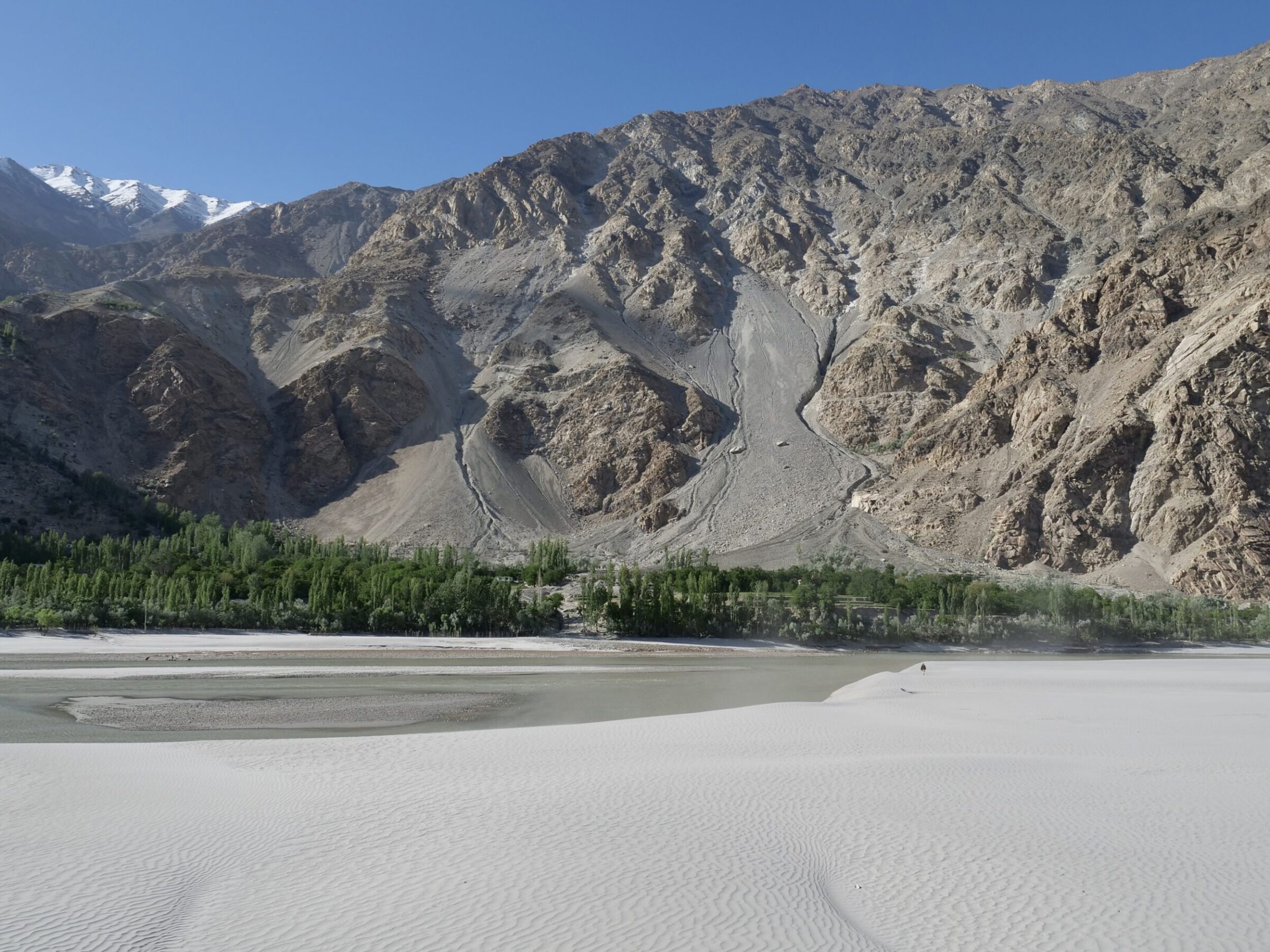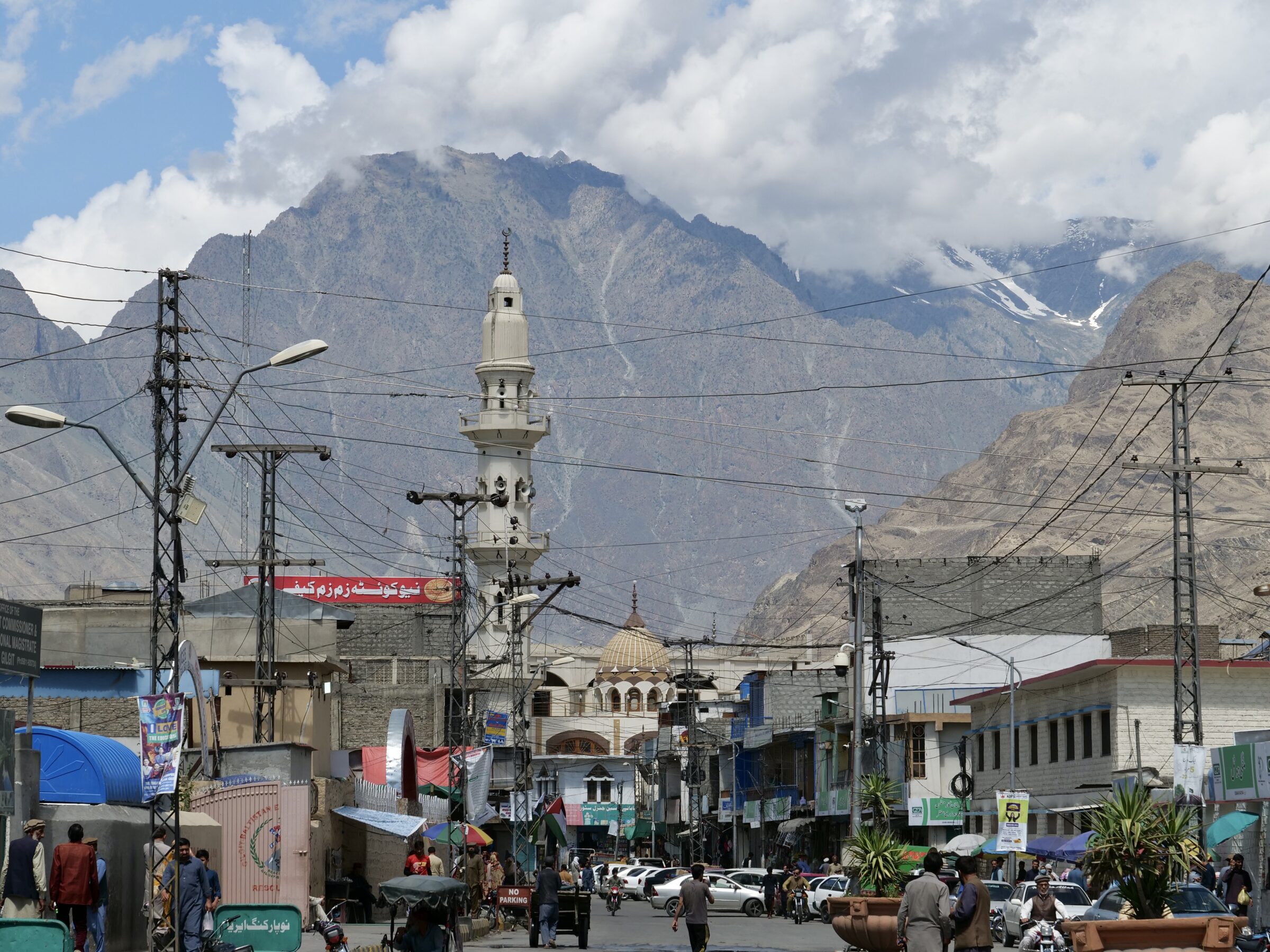As in #10 in this series, you are looking at a photo which illustrates the power of the Shyok River.
By road, we were now 35 minutes further upstream, closer to Khaplu.
At 4.49 pm on 15 May 2024, the fast-flowing, largely glacier-fed river’s flow was relatively low.
The Shyok’s width, depth and flow-rate are hugely variable; the river transported and deposited all of the photograph’s silt, sand, gravel and rocks.
My telephoto lens zoomed in on just a very small portion of what my naked eyes could see in a single glance, with head still.
One translation of the Shyok’s name: river of death.
Its floods have killed many people, drowned trees and crops too, and destroyed/removed many formerly-arable fields, even some of the houses that had been built above and behind the fields, on what used to be “safe” ground.
Comments closed








